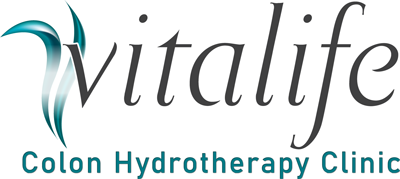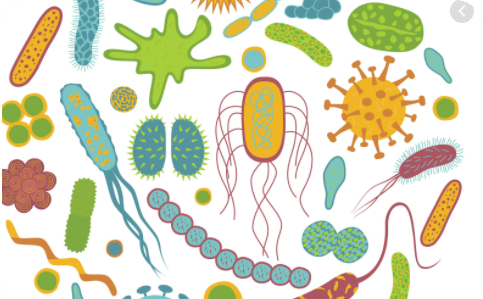Parasite Identification
Identifying specific parasite infections is difficult at best. Available tests in Canada prove to be less than accurate, and protocols for solving the issue of parasites generally involves antibiotics. Can you say “pesticide.” That’s essentially what antibiotics are. What? No one has ever said that to you? Why would they.
Antibiotics and their side effects
Side effects can include rash, dizziness, nausea, diarrhea, or yeast infections. More serious side effects include Clostridioides difficile infection (also called C. difficile or C. diff), which causes diarrhea that can lead to severe colon damage and in severe cases, death.
Antibiotics are medicines that fight infections caused by bacteria in humans and animals by either killing the bacteria or making it difficult for the bacteria to grow and multiply.
A pesticide is any substance used to kill, repel, or control certain forms of plant or animal life that are considered to be pests.
Antibiotics work – there’s no question here, but what are they doing to you long term? Look what they’re doing to our environment! I digress…
Back to Identifying parasites
Once you determine you actually have parasites, then you must carefully consider dietary choices, cleanse the colon, the GI tract, and the liver continuously until those pesky buggers decide to leave. Minimum protocol usually takes about 3 months (with full dedication to the task) but, can take much longer.
Types of Parasites
Below, are some great slides that show you the multitude of things we humans sometimes carry.
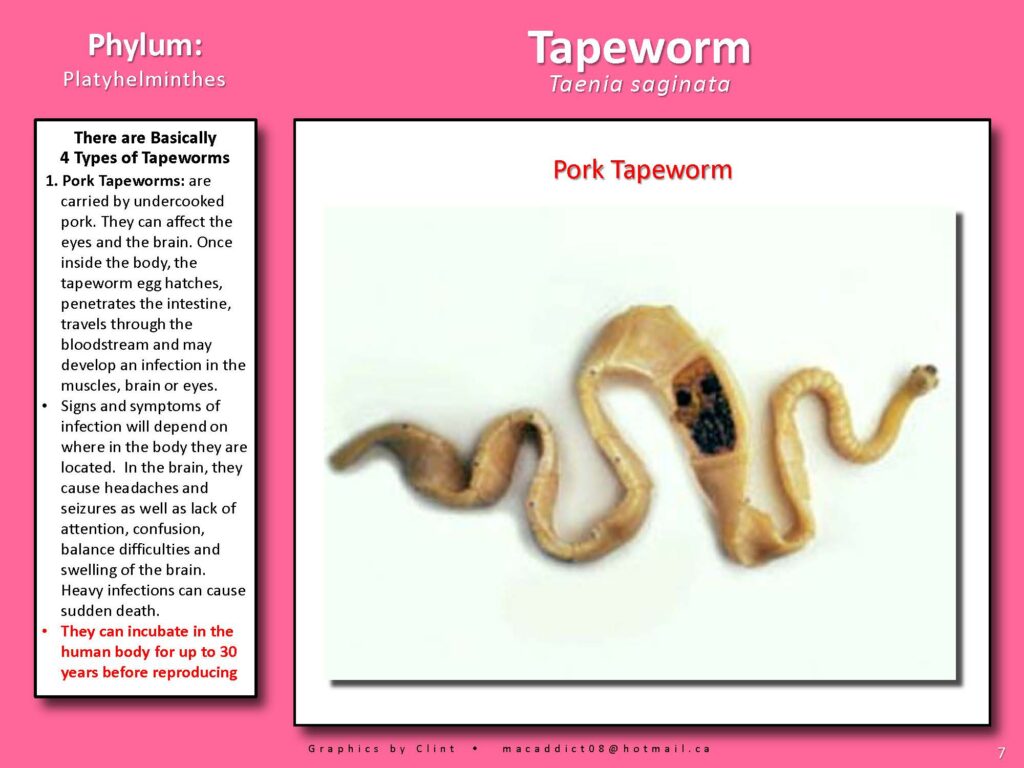
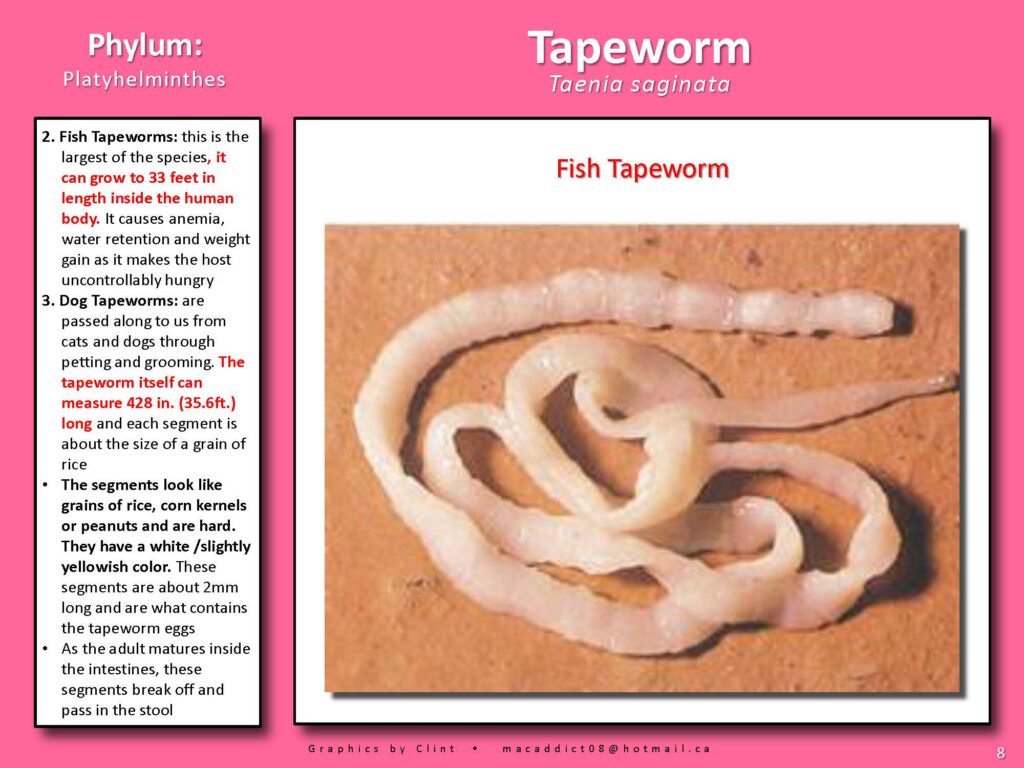
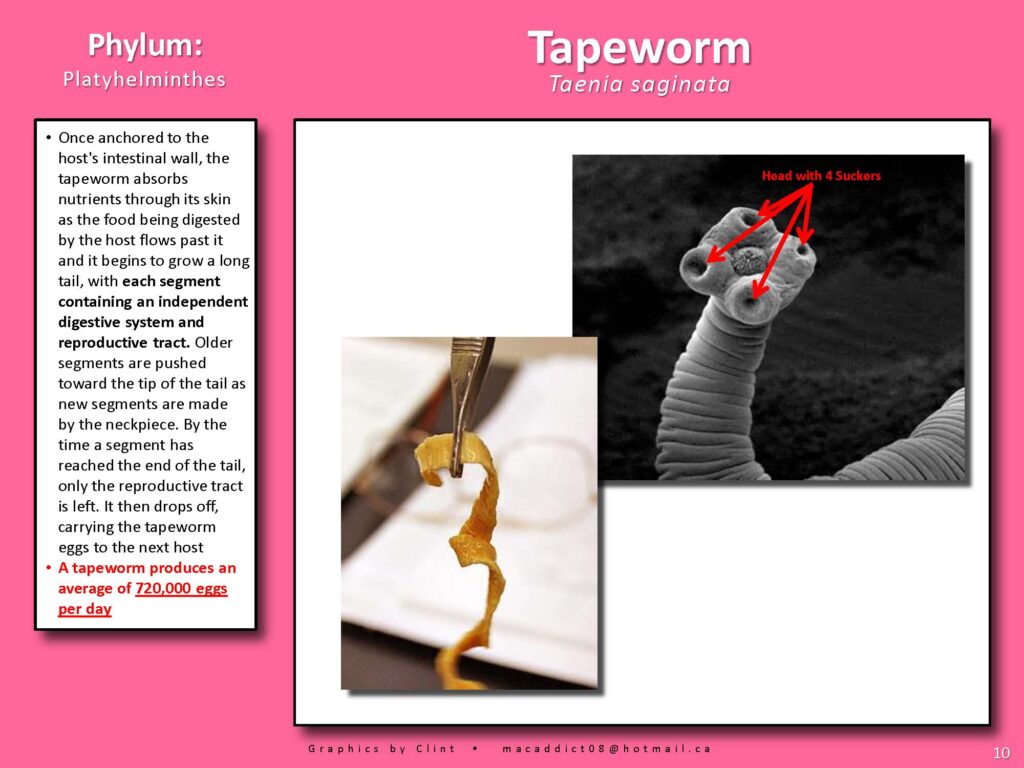
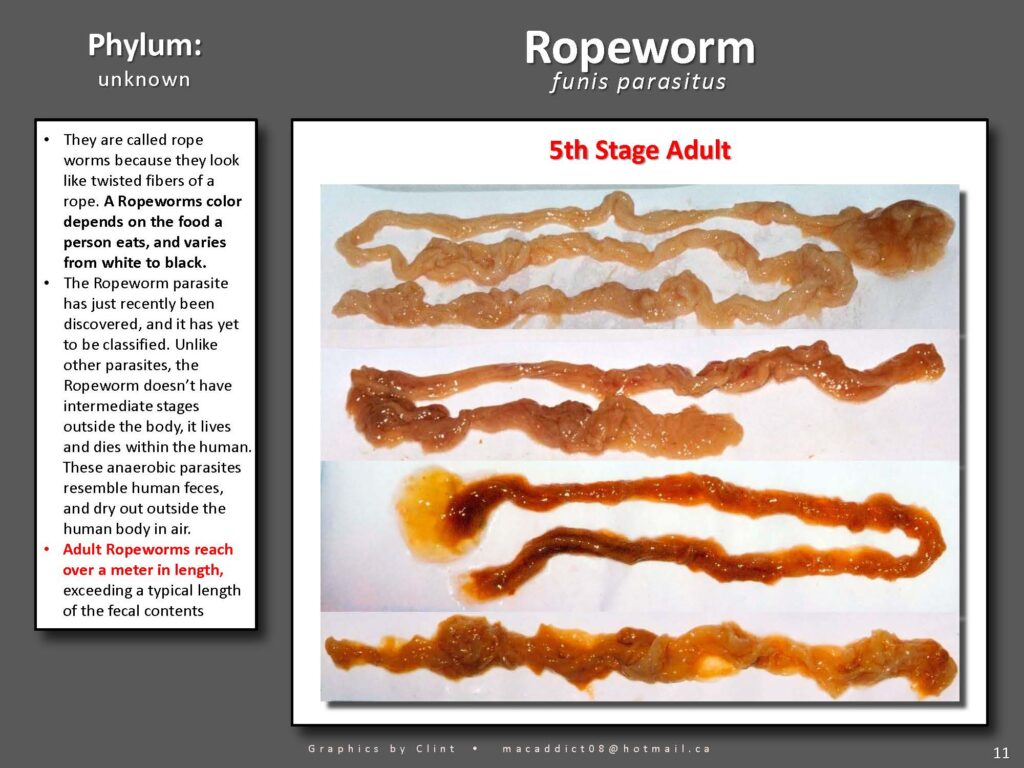
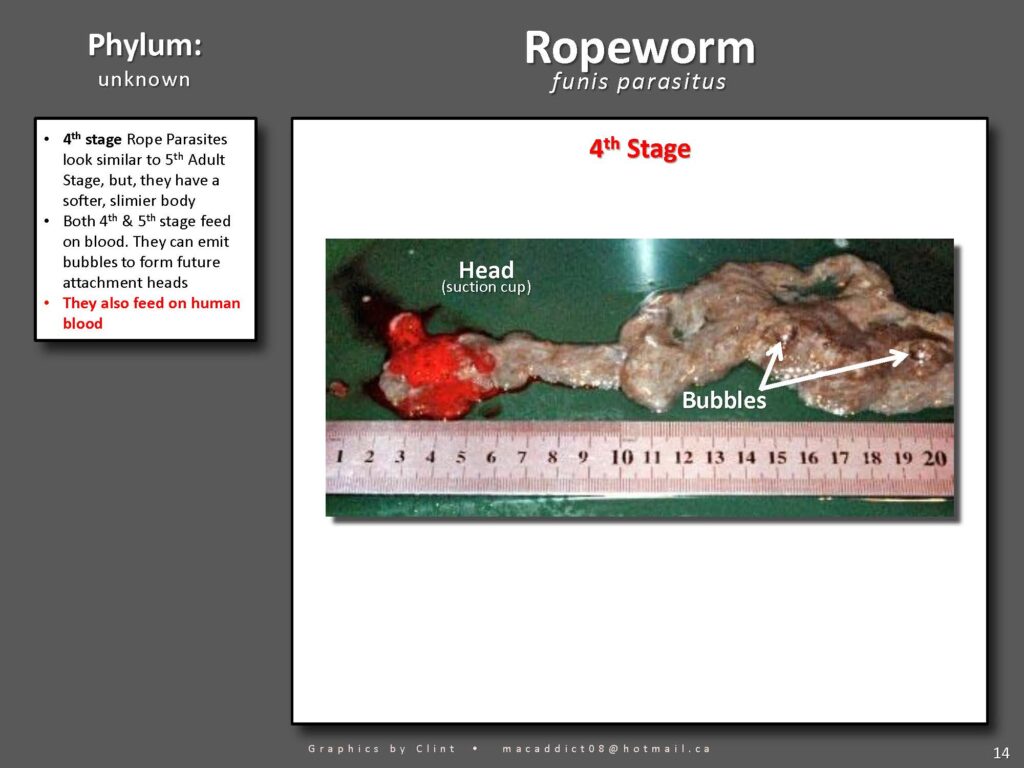
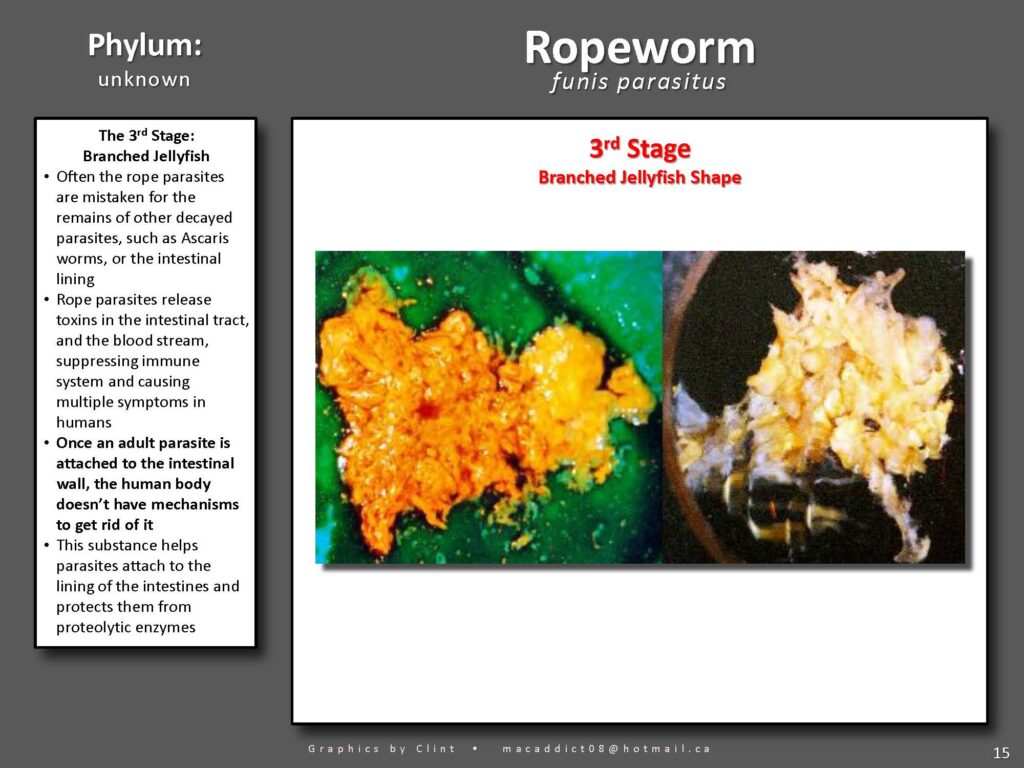
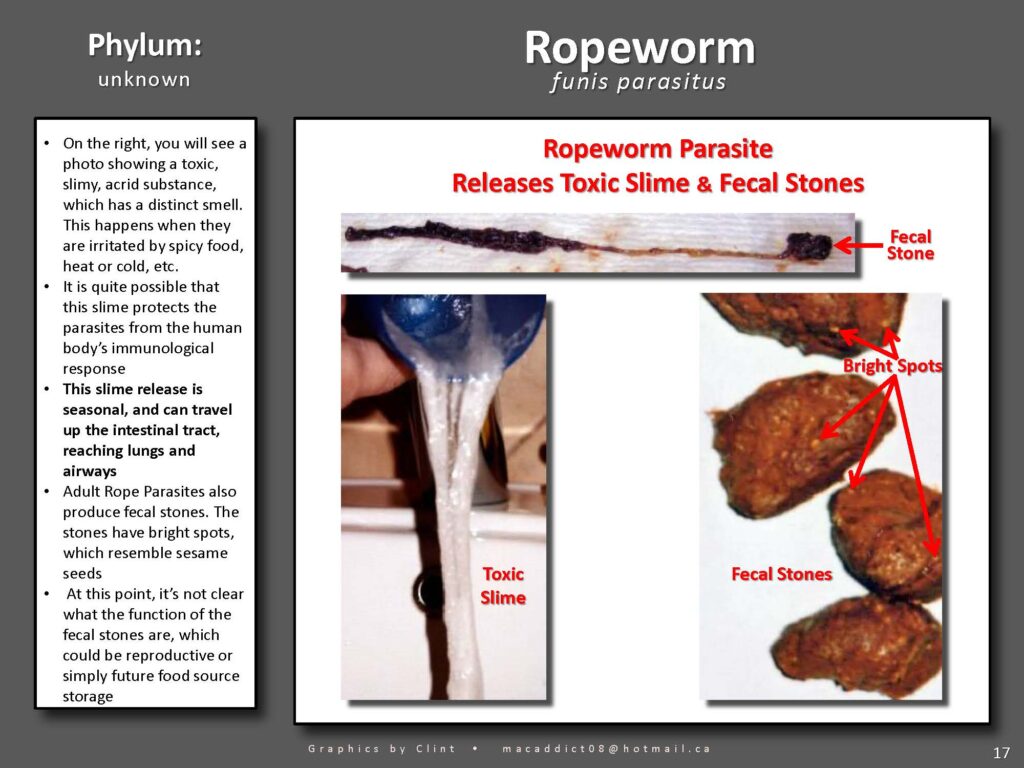
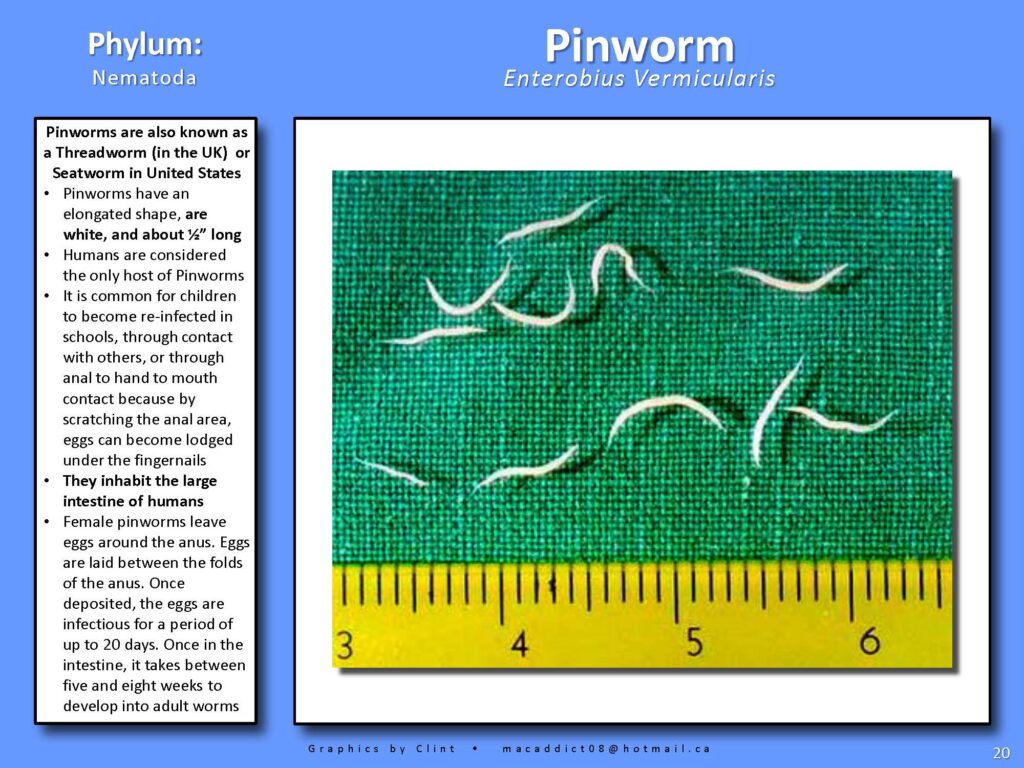
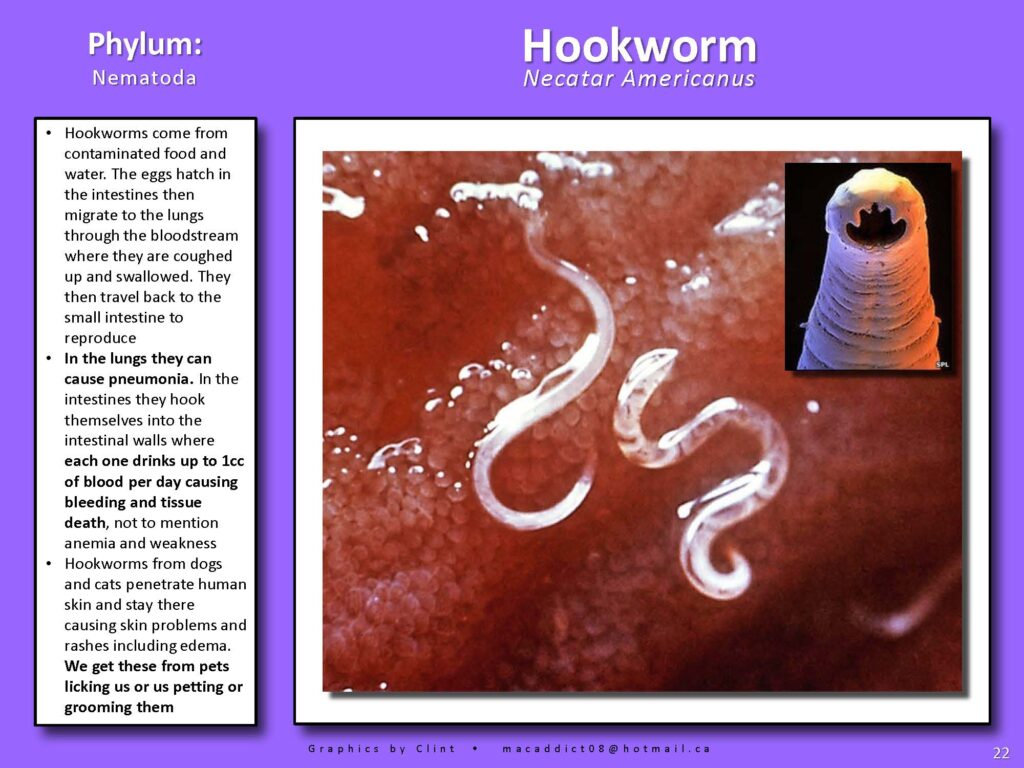
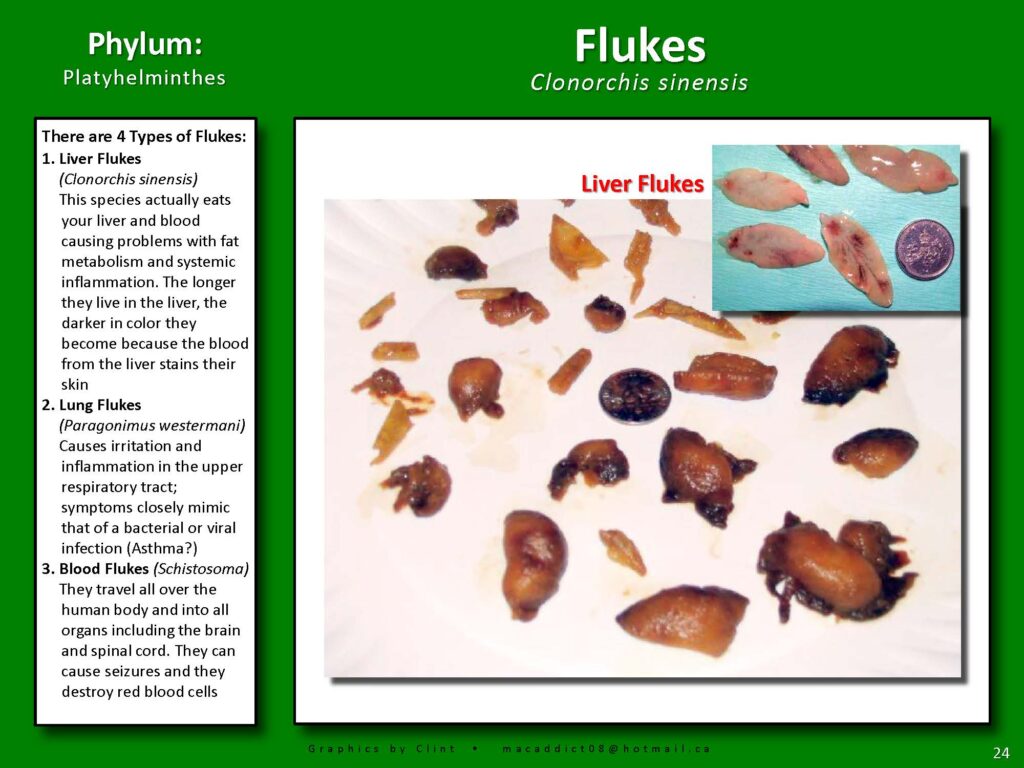
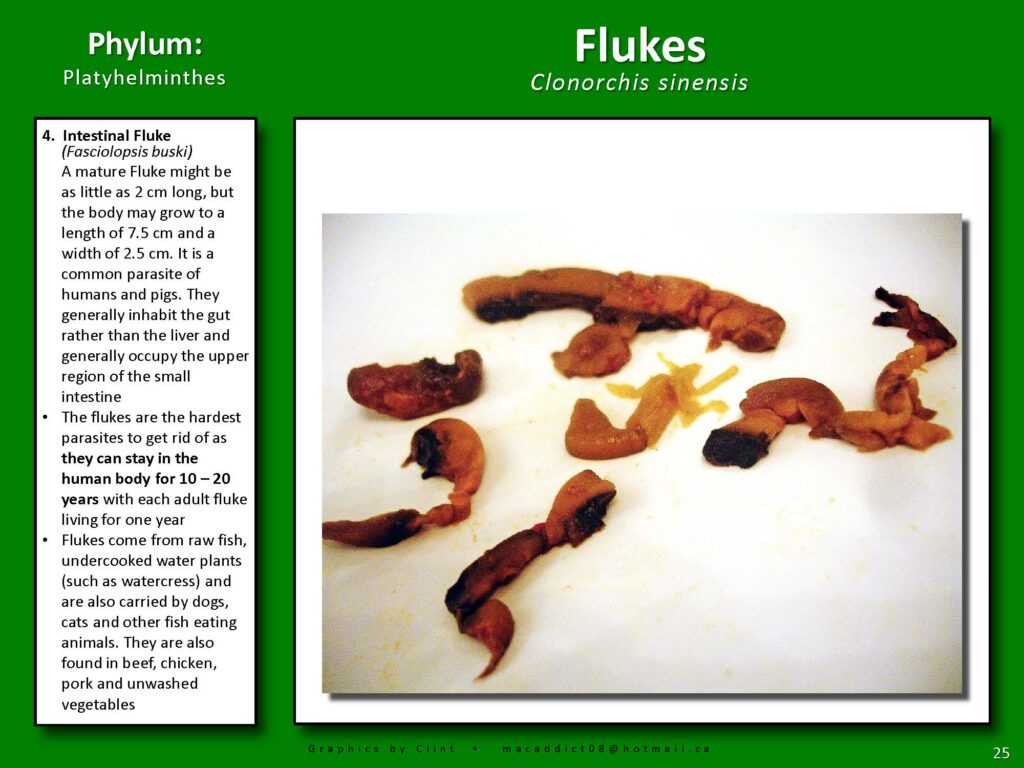
How do you contract a parasitic infection?
Food, water, soil, insects, person to person contact, blood transfusion or sharing needles, bare foot around pool deck and in public showers, and lets not forget our PETS! Letting pets lick your face is a surefire way to let those pesky parasites in.
Foodborne parasites most commonly come from:
- undercooked fish, crabs, and mollusks;
- undercooked meat;
- raw aquatic plants, such as watercress; and
- raw vegetables that have been contaminated by human or animal feces.
Some foods are contaminated by food service workers who practice poor hygiene or who work in unsanitary facilities. Always wash your fruit and vege well. Soap and water is fine, but some prefer to use products made specially for food prep. For proteins, the cooking process takes care of anything that may be harmful.
Symptoms
Too many to list, but most commonly a parasitic infection can cause abdominal pain, diarrhea, muscle pain, cough, skin lesions, malnutrition, weight loss, neurological and many other symptoms depending on the particular organism and burden of infection.
Chronic Illnesses
Have you been struggling with chronic issues that no one can pinpoint? Chances are, you may be providing a physical home to some of these critters. They can wreak havoc on your body functions, sleep, elimination, natural detox capabilities, not to mention, they literally steal your nutrients!
Proper hygiene practices
As if we haven’t heard this enough… wash your hands! Keeping our hands clean is so important because our hands touch our faces more times in a day than we can count. When it comes to hand sanitizer… best to only use if you have no access to soap and water. Hand sanitizing breaks down our natural barrier and leaves us without protection. Soap and water for handwashing is your best bet for keeping ourselves in good health.
